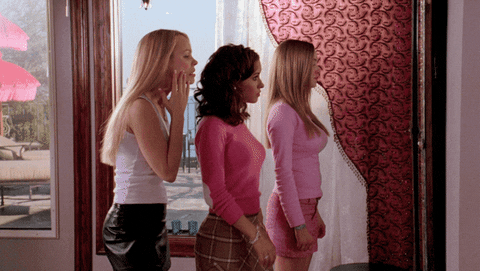Growing up, pink was one of my favorite colors. I imagine it was the same for a lot of people as young girls. From pastel pink to millennial pink to even hot pink, the color has found its way back into the closet of Gen Z and on the racks of many popular clothing stores such as Zara or Forever 21. This return of pink may sound like an odd connection to feminism, but it does hold significance in the sense that for plenty of girls, this is a start to embracing (or re-embracing) their femininity.
The feminine pink association might’ve been instituted in the environment that our parents often put us in, such as our rooms, toys, or outfits. Gender roles were installed at an early age: most girls receive pink products to be associated with femininity, while most boys receive blue or red items which is associated with masculinity. However, as we get older, we realize the confines of these binaries so we push for our own agency and individuality. Being placed in these boxes basically guarantees a rebellious phase for many young girls where we avoid dresses and skirts, makeup, and even the color pink in an effort to “earn” an individuality outside of femininity and “girlishness” to find our place as individuals.
For others, this might’ve been one of our earlier attempts at being feminists, where we believed that moving our identities away from stereotypical female interests would assert us as true progressives. Unfortunately, what we failed to realize is that this “feminism” was a guise for deeply-rooted societal misogyny that gave femininity its negative associations.
A part of this internalized misogyny is due to pop culture. We had movies based around high school while we were growing up, such as Mean Girls, where pink is highly associated with the antagonist — popular yet manipulative mean girl Regina George. The color pink along with other highly feminine interests are portrayed as shallow and self-absorbed. In addition, the media followed female celebrities such as Paris Hilton in the early 2000s (who wore a lot of pink), to manipulate the media into believing their unabashed femininity was something to be shamed.
While we tried to solidify ourselves as individuals, we might’ve subconsciously shamed other young girls for their femininity; for liking things such as makeup, clothes, or even the simple preference of the color pink. In other words, girls simply are never allowed the space to have interests that are free from any judgement. For me, I was guilty of this mindset in elementary school and tried to avoid dresses and skirts. I would protest anything related to this dreaded color.
As social media continues to dictate fashion trends and new styles for Generation Z to follow, we also see specific colors and their values coming and going from the forefront of modern fashion. For example, army green was popular for a moment when people would wear bomber jackets or camouflage. There was even an unfortunate point in time when we had rose gold everywhere; to the point that Apple even released it as an iPhone color. With the re-emergence of Y2K fashion, we approach our new trending color that popped back into style: pink.
In recent years, the prevalence of social media in our lives has had a positive effect on our understanding of feminism and femininity. TikTok influencers such as Chrissy Chlapecka often wears extravagant hot pink outfits in her short videos, where she makes commentaries on girls embracing their femininity and sexualities.
As we continue to mature, we start to realize how femininity isn’t a bad thing, and it is perfectly acceptable to embrace our “girliness” and be an advocate for feminism at the same time. These things aren’t mutually exclusive. Feminism does not consist of being only interested in anti-feminine interests. It means that we should have the freedom to be unabashedly feminine and authentically ourselves, which is already radical in itself.



